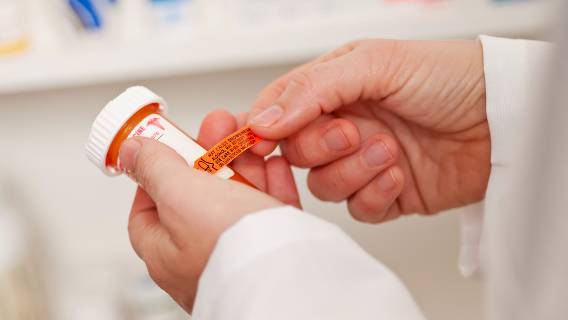ADHD Medication Will Soon Include Updated Warning Labels
Editors carefully fact-check all Drugwatch.com content for accuracy and quality.
Drugwatch.com has a stringent fact-checking process. It starts with our strict sourcing guidelines.
We only gather information from credible sources. This includes peer-reviewed medical journals, reputable media outlets, government reports, court records and interviews with qualified experts.

In an effort to decrease potential negative effects of stimulants prescribed to treat conditions such as attention-deficit/hyperactivity disorder, or ADHD, the U.S. Food and Drug Administration will update warnings on the labels of prescription stimulants.
This includes information about the dangers of abuse, overdose, addiction, misuse and death from the stimulants. The current warning reads, “potential for abuse and dependence.” The new warning will read, “Warning: Abuse, misuse, and addiction.”
The new warnings will appear on labels for these medications used to treat ADHD:
- Adderall
- Concerta
- Dexedrine
- Focalin
- Metadate
- Ritalin
- Vyvanse
The new labels should also work as a reminder for health care professionals to monitor patients for obvious signs of abuse or addiction.
Adderall Shortage Continues
In June 2023, the head of the FDA, Robert M. Califf, blamed the recent nationwide shortage of Adderall on the drug being overprescribed.
“If only the people that needed these drugs got them, there probably wouldn’t be a shortage,” he said.
Califf said telehealth is partially to blame for the drug’s increased use. He also blames the shortage on a lack of incentives for generic drug makers.
“A number of generic drugs are in shortage at any given time because there’s not enough profit for a company to go into the business of making that drug,” he said.
A shortage of Adderall has been an ongoing problem since late 2022 and into 2023 in part due to the COVID-19 pandemic. Supply problems have improved, but many pharmacies still have difficulty keeping the drug in stock. Califf is calling for improved clinical standards in hopes of preventing another shortage of the stimulant.
More Teenagers Using Stimulants
With ADHD diagnoses climbing at a rapid rate for the past two decades, more people are turning to prescription stimulants to treat the condition. Many of the 9.5 million patients across America who are prescribed ADHD medications are children and teenagers.
Research shows that 1 out of every 12th grader will use prescription stimulants to treat ADHD. According to a study published in April 2023 in the Journal of the American Medical Association, schools with higher rates of students who are prescribed ADHD drugs are more likely to have a problem with misuse or abuse of the drugs.
Dangers of Stimulant Abuse
The misuse or abuse of prescription stimulants can cause sudden and serious health effects. Anxiety, depression, irregular heartbeat, paranoia and seizures are just some of the potential side effects. The drugs can also give someone a euphoric high and are often misused to improve concentration and alertness.
According to the Substance Abuse and Mental Health Services Administration, studies show that between 4% and 20% of college students have used a prescription stimulant without having a prescription. Many students are able to get the drugs from friends. About a third of college students with ADHD say they’ve sold or given away their medication at least once.